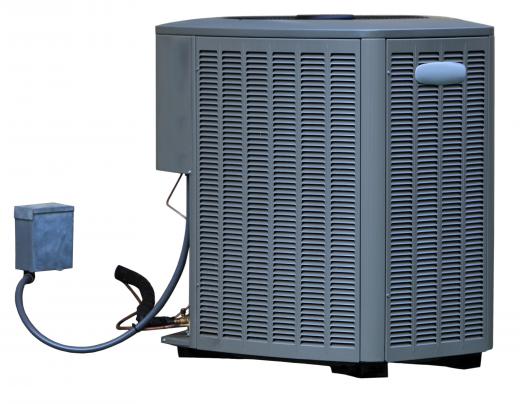A common way to measure the energy-efficiency of an air conditioning unit is through the seasonal energy efficiency ratio (SEER). The more energy-efficient an air conditioner is, the higher its SEER rating will be. Defined mathematically, this rating is the amount of cooling output, measured in British Thermal Units (BTUs) during a typical cooling season, divided by its energy usage, measured in watt-hours, during the same cooling season. As energy prices have increased, the importance of energy efficiency in air conditioning, and therefore that of the SEER rating, has increased significantly.
The SEER rating of an air conditioner measures efficiency over a whole season, and the energy efficiency ratio (EER) rating measures it for one given point in time. For example, an air conditioner's efficiency for the summer of 1998 would be measured by this rating, but its efficiency at 3:07 in the afternoon on 4 August would be reflected in an EER rating. The SEER rating of a unit is usually a number between about six and 25. Newer units usually have a higher rating, reflecting more efficient energy usage.

If an air conditioner operates for a total of 800 hours during a cooling season, and has an output of 5,000 BTUs per hour, then the total energy output for the season will be four million BTUs. If the unit has a SEER rating of 20, then the total energy usage will calculated as 4 million divided by 20, to find the watt-hours used. The result is 200,000 watt-hours for the whole season. The number that the rating represents, therefore, is the number of BTUs that are produced for every watt-hour of energy consumption.
Some governments have instituted laws, mandating a specific minimum level of energy efficiency, as measured by a SEER ratio. For example, in the United States, all air conditioners sold on or after 1 January 2006 are required to have a SEER rating of at least 13. Air-conditioners that are mounted in windows are not affected by this law, and it is common for these to have a rating of about nine or ten. For a unit to have the special Energy Star certification, its rating must be at least 14.
It is possible to see significant savings in cooling costs by upgrading to a more efficient air conditioner, in many cases. For example, an upgrade from a SEER rating of nine to 12 would translate into almost a third less energy used per season. This can potentially result in hundreds of dollars of savings per year, to the point that a new unit could even pay for itself in savings.
